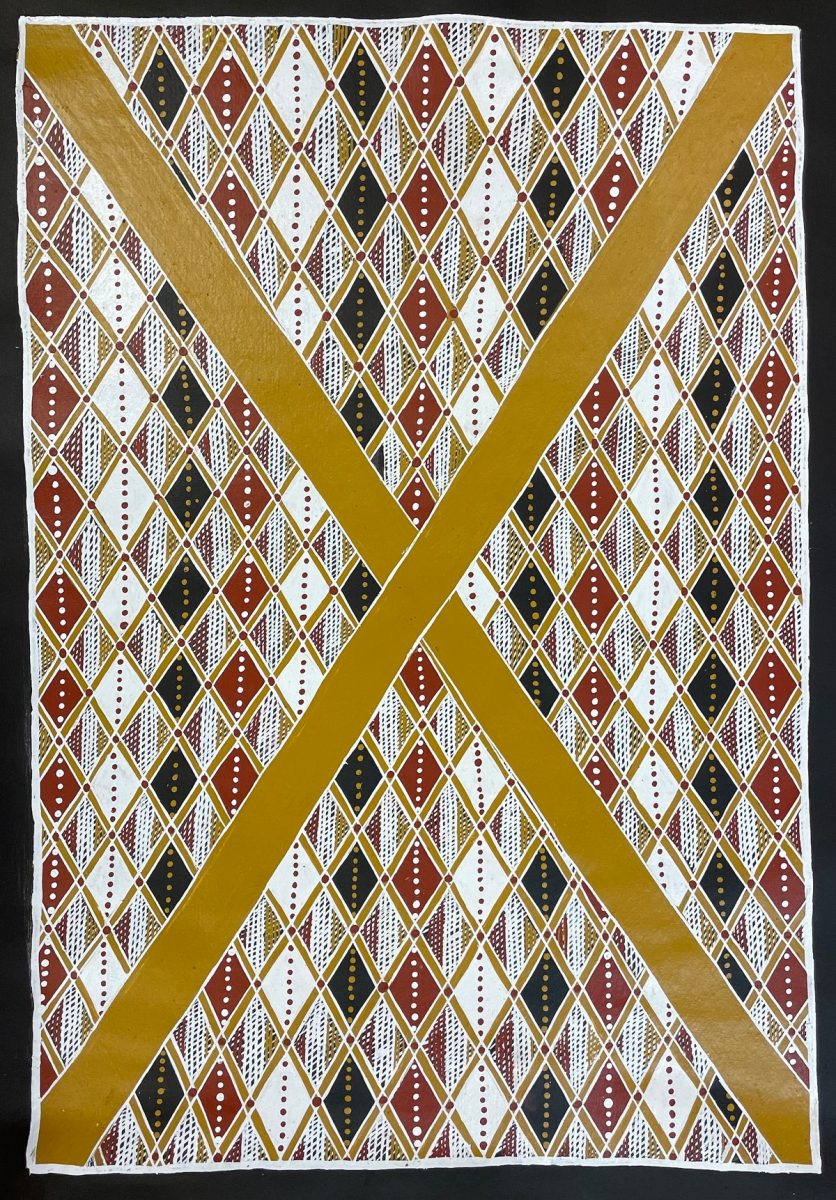Bula'Bula Arts

Niwuda (yirritja) Honey
The people of North Eastern and Central Arnhem Land classify four different types of honey according to taste, the bees, the hive and itís location. As with everything in the Aboriginal world, these are divided into Dhuwa and Yirritja. The main types are Niwuda (yirritja) and Yarrpany (dhuwa). Niwuda is associated with the Gumatj, Dhalwangu, Birrkili, Balmbi, and Gupapuyngu groups. It is represented in a design of diamond- shapes denoting wax cells of the bee hive. These are sealed (cross hatched), empty and half full (tartan design). The honey spirit fled the plains when the fire occurred in the Barama and Lanyítjun creation story. Djirigitj quails fled the fire and are said to have carried the fire across the country. The spirit is not in the bees, honey, trees, or hive but animates these pieces. The cone shapes in paintings represent the ngurru or nose which is the igloo like entrance to the hive. These are shaped and sized this way to prevent ants and other insect predators from raiding the hive. They were left behind by the Wangarr (original creative beings) and now exist metamorphosed into rocks in these language groups lands. A spirit in the form of a man called Murrayana, the happy spirit, is associated with this honey. He wears the honey design on his body, his chest and thighs. Dancers in ceremonies today wear these body paintings. Murrayana taught people how to sing and dance and be happy.